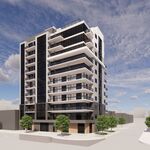lenaitch
Senior Member
Maybe we need a "I Hate Motor Vehicles" thread this isn't specific to other thread topics. Sort of like the 'General Railway Discussions" thread.

The Canadian city of Brossard, located right across the St. Lawrence River from Montréal, has installed a new traffic light in a school zone that only turns green for safe drivers.
The light’s Québécois manufacturers call it the “feu de ralentissement éducatif” (educational traffic-calming light), or FRED.
The light is red by default, but turns green when an attached speed camera detects an approaching motor vehicle that’s driving under the speed limit.
“Across Canada, near school zones, people are asking for concrete measures to control speeding. This (technology) has not been accepted yet by the government, and we’re going to do it as a test,” Brossard’s mayor, Doreen Assaad, told StreetsblogMASS.
Mayor Assaad added that though it’s the first time it’s being tried in Canada, similar signals have been in widespread use across Europe for years.
The FRED light in Brossard is being tried out for a 90-day trial period on Rue Stravinski, a two-lane street that runs through a suburban residential area.
Before the light was installed, Mayor Assaad said that Rue Stravinski had average vehicle speeds of 40 km/h (25 mph). But in the past week, average speeds have dropped to 29 km/h (18 mph).
Unlike Massachusetts, Quebec also has automated enforcement cameras that will issue fines when they detect drivers who exceed speed limits or ignore red lights.
“Fines might be effective, but it’s effective after-the-fact,” says Mayor Assaad. “The beauty of FRED is we reward good behavior, and it’s immediate. It doesn’t record any private information, it just detects that the vehicle is coming and measures its speed. So it’s a carrot instead of a stick.”
Can't see this accepted by some Toronto councillors, like Stephen Holyday and others.Mayor Assaad warned that the current FRED light can only be used in specific circumstances: it’s not capable of controlling traffic at intersections, and it only works on smaller roadways, with one lane in each direction.
But anyone who’s dealt with antisocial, dangerous drivers can probably imagine lots of possible applications for similar technology here.
Many traffic lights are already equipped with cameras, sensors, and wireless connections: imagine a citywide network of traffic signals that can detect a speeding driver, or someone parking illegally in a bus lane, to prioritize red lights for dangeous drivers across the entire city.
And while legislation to legalize “automated enforcement” cameras that would use cameras to issue civil fines for speeding and other traffic violations remains stalled in the State House, there’s nothing preventing cities from reprogramming traffic signals to make bad drivers spend more time staring at red lights.
Wow. A good case for having a 30 km/hr speed limit on roads like that. (though also a good case in not having a 50 km/hr too). I'm surprised that no one mentions that, but instead go to speed bumps, which would be designed to stop people speeding - not going 40 km/hr.Aftermath,
How driver was able to prove his innocence after hitting girl
All the speed bump in front of my house has accomplished is to have large trucks shaking the house and cracking my plaster walls. The fix for that small residential street is to prevent its use as a diversion, increase the sidewalk width, and eliminate on-street parking. In many jurisdictions, before you’re allowed to register a car you must prove that you have somewhere to park it off the public road space.Good lord, I can't imagine driving 40 on that street.
I think it is a failure of the anglosphere imagination that we go to speed bumps as the solution. I think they tend to just encourage people to race from one speedbump to the next. I think having some chicanes in that street would help quite a bit. Also, I having a rougher paving surface that makes driving faster than 30 seem unpleasant.
^ Is there any current use of chicanes in the GTA? Seems surprising to me - sure seems we aren’t even trying the idea as a pilot or test program.
- Paul




